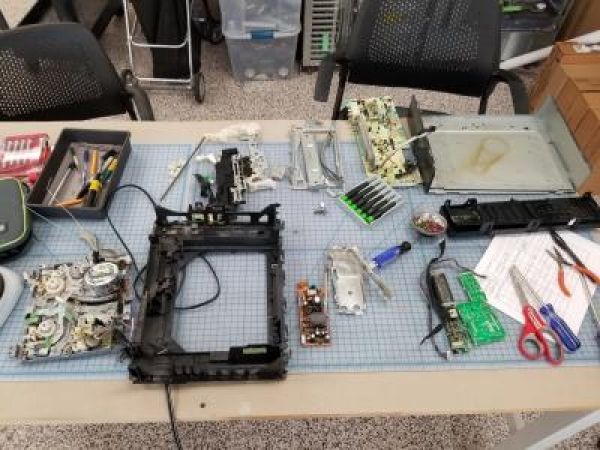A new study, led by a researcher at the Yale School of the Environment’s Center for Industrial Ecology and published recently in the Journal of Industrial Ecology, has found that the total mass of electronic waste generated by Americans has been declining since 2015. In an age when most of us can’t imagine life without our digital devices, this surprising finding has ramifications for both how we think about electronic waste’s future and for the laws and regulations regarding e-waste recycling, according to the study’s authors.
The biggest contributor to this decline is the disappearance of the large, bulky cathode-ray tube (CRT) televisions and computer monitors from American homes, says Callie Babbitt, a professor at Rochester Institute of Technology’s Golisano Institute for Sustainability and one of the study’s authors. Since about 2011, CRT displays have been on the decline in the waste stream, helping to lead the overall decline in total e-waste mass.
This decline in bulkier displays means that e-waste regulations may have to be rethought, says Babbitt. “If you look at the state laws that exist in many places for e-waste recycling, many of them set their targets based on product mass,” she says. As the overall mass of e-waste declines, meeting those targets becomes more difficult. Moreover, says Babbitt, the main goal of these regulations had been to keep electronics with high levels of lead and mercury out of landfills, where they can eventually leach into the surrounding environment. But these days, a more pertinent concern is how to recover elements like cobalt (used in lithium-ion batteries) or indium (found in flat-panel displays). These elements aren’t as environmentally toxic; rather, they are relatively scarce in the Earth’s crust, so failing to recapture them for reuse in new electronics is wasteful. “The e-waste recycling system is somewhat backwards-looking,” says Babbitt; it has struggled to keep pace with the changing nature of electronics.
Read more at Yale School of the Environment
Image: To amass the data necessary for their study, the authors used material flow analysis. They focused on 20 categories of digital devices -- including computers, smartphones, digital cameras, and audio-visual equipment -- and disassembled dozens of products in a lab in order to determine the relative content of various important elements. (Credit: Yale School of the Environment)


